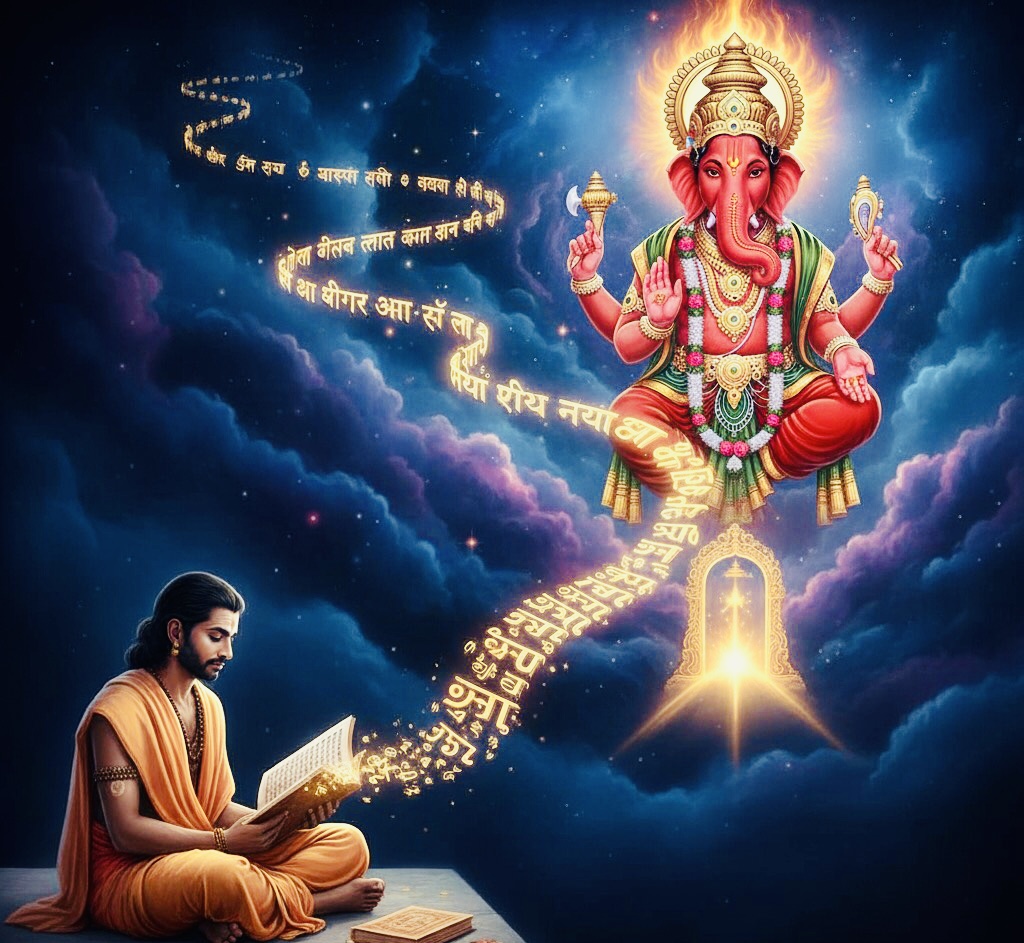I love English literature. Most of my favourite books: both fiction and non-fiction are written in English. I’ve even written two books in it myself.
But when it comes to expressing Dharma, Sadhana, or Tantra, English begins to show its limits. It’s a beautiful language for ideas, but a clumsy one for the inner world. Read a few translations of dharmic texts and you’ll see it something always feels lost, or worse, diluted.
This came up recently when someone messaged me for sadhana advice. We were talking about visualization, something that shows up in both Mantra Sadhana and Kriya Kundalini Yoga.
In Mantra Sadhana, every practitioner is given a dhyana shloka a sacred verse describing the form of the Devata to visualize before chanting.
For instance. The Ganapati Atharvashirsha paints a vivid picture of Ganesha-
Eka-Dantam Catur-Hastam Paasham-Angkusha-Dhaarinnam |
Radam Cha Varadam Hastair-Bibhraannam Muussaka-Dhvajam ||
Raktam Lambodaram Shuurpa-Karnnakam Rakta-Vaasasam |
Rakta-Gandha-Anulipta-Anggam Rakta-Pusspais-Supuujitam ||
See him as the One-Tusked Lord (Ekadantam ) glowing with a soft reddish radiance (Raktam).
With four hands he holds the noose (Pasha), the goad (Ankusha), a sacred tusk (Rada) and offers blessings through the Boon giving (Varada) Mudra.
His banner carries the emblem of a rat (Mushaka). His form is the large-bellied one (Lambodara), with broad fanlike ears (Shurpa Karna) that catch even whispered prayers.
Clad in red garments (rakta vastram), anointed with red fragrant (rakta-gandha) paste and worshipped with red flowers (rakta pushpa), he stands as a vibrant, compassionate presence in your sadhana.
Bringing this form into your visualization during mantra sadhana is an essential part of the Ganapati Sadhana tied to that particular mantra.
When you sit for mantra japa, this image isn’t just “imagination.”
It’s a precise instruction for tuning your mind to the Devata’s frequency.
The confusion begins when English calls this process “imagination.” The word immediately implies “not real.” For beginners, this can cause unnecessary doubt right at the start of practice.
But in yogic understanding, the mental plane isn’t imaginary. It’s simply another layer of reality as real (or unreal) as the physical one. Yogic science tells us we have a physical body, a mental body, an energy body all existing together, superimposed like transparent sheets forming one whole picture.
You’ve seen this play out in life. Some people are physically beautiful but mentally insecure their mental state seeps into their physical presence. Others may not fit conventional ideas of beauty, yet their confidence and mental clarity pull people toward them.
The mental always influences the physical.
Many great authors have spoken of “channelling” their writing, as though the words flowed from another plane. Likewise, in Sadhana, everything first takes shape on the mental plane before it manifests outwardly.
So, when you read dharmic ideas in English, tread carefully.
Ask if the words used actually reflect what the original meant. Otherwise, you might end up practising a simplified, diluted version of something far more profound.
If this touched you, step gently into our Tantra circle https://shorturl.at/4Fs5a where devotion becomes practice, and every small step begins with his blessing


No responses yet